Enclosure Late medieval wall
The Christian walled enclosure of Valencia was built from 1356, by order of King Pedro IV the Ceremonious, replacing the old defensive fence from the Islamic era that had remained standing until that moment.
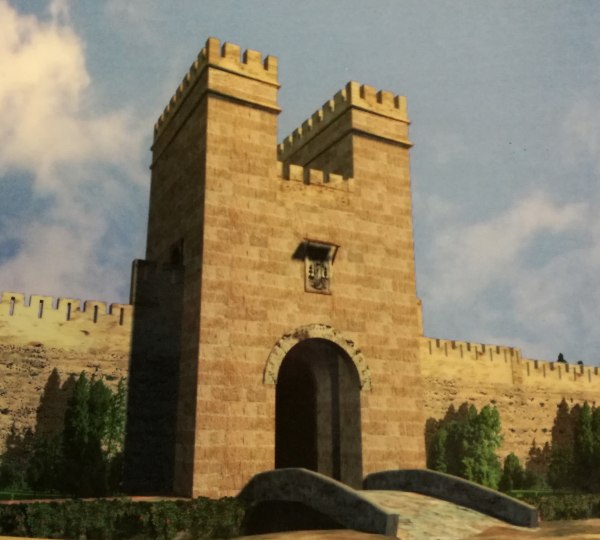
Due to the war with Castile, the so-called War of the Two Pedros, the need to erect a new fortification that would cover more land than the old one in Muslim prop became evident.
Thus, this new wall, whose perimeter is approximately four kilometers, made it possible to encompass the old outer suburbs such as the Boatella or La Xerea, as well as new monastic complexes such as the convent of Santo Domingo, San Francisco or Carmen, tripling the previous urban area, which reached around 142 hectares.
Throughout its rounded enclosure, twelve fortified gates were opened, divided hierarchically into Portals Grans and Portals Xics, which made it possible to control access to the city.
For better communication between the different neighbourhoods, several gates were opened, including the Portal de Valldigna, opened over the Arab wall in 1400 to provide access to the mulberry shop. It is a semicircular arch, of ashlars, with a slight advance in the imposts. On top of it was placed in 1589 an altarpiece commemorating the foundation of the monastery of Valldigna by King James II the Just. The altarpiece that can be seen today is a reproduction made in the 60s of the twentieth century. Other gates opened in the Islamic wall were that of N ́Esplugues or Trabuquet, that of N'Avignyó, the gate of Sant Jordi or Na Xamorra or the well-known tower of Ali Bufat, of Muslim origin, which framed the portal of the Temple.
The Great Portals were: the Puerta de Serranos to the north, the Puerta de San Vicente to the south, the Puerta del Mar to the East and the Puerta de Quart to the West. Of these, only the Serrans and Quart gates have been preserved.
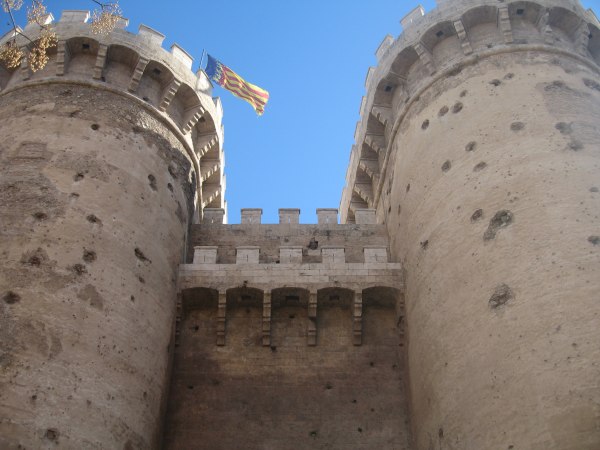
For its part, the most important Xics portals are: El Portal dels Jueus, Portal de Russafa, Portal de Torrent, Portal del Coixo o dels Setze Claus, Portal dels Tints, Portal Nou or de Sant Josep, Portal de Blanquers, Portal del Real and Portal de la Trinitat.
Outside, the defensive wall was provided with a large moat excavated or fenced through which the waters of the Rovella irrigation canal circulated. Likewise, the northern façade that bordered the old bed of the Turia, was reinforced from 1400 with semicircular towers, arranged on both sides of the monumental Torres de Serranos by the master Pere Balaguer, forming a Gothic scenery characteristic of the capital of the Kingdom of Valencia.
One of these towers was known as the tower of Santa Caterina which was built in 1390. It had a cylindrical floor plan, made of stone ashlars and had a bas-relief with an image of the Saint flanked by two coats of arms of the city and an inscription with the date of construction of the tower. It was demolished in 1772 and rebuilt in 1833 to be definitively dismantled in 1865. The tombstone with the image of the saint and the inscription is preserved in the so-called "Sala de la Muralla" in the basement of the IVAM.

During the Foral period it was the "Factory of Walls and Valleys" the institution responsible for its construction and maintenance for five centuries, until its definitive demolition in 1865, although its layout is still perceptible today in the ring road formed by the current streets of Blanquerías, Conde de Trénor, Pintor López, Paseo de la Ciutadella, Puerta del Mar, Colón, Xàtiva and Guillem de Castro.
L'Demolition of the walls was decreed in the year 1865 by order of the civil governor, Cirilo Amorós, citing as a pretext the need to give work to the many unemployed workers affected by the crisis of the silk industry and also by the need to open the city due to health problems.
At present you can visit remains of the late medieval wall in the Hall of the Wall of the IVAM where it is possible to know its constructive characteristics of superimposed formwork tapiales and in the Plaza de los Pinazo part of the Door of the Jews has been recovered.

This door was also known as Portal de Sant Andreu because of an image of this saint on the cover, or as the portal of Santa Caterina due to its proximity to this convent.
In 1391 there are already news of this gate and in 1422 a new gate was built with two towers and a stone bridge to cross the moat. In 1607 the gate was transformed into a single tower with a bastion. In 1689 the door was boarded up and was only opened occasionally until its demolition in 1890 as a result of the extension of En Joan d'Austria street. After the excavations carried out in 1998, it has been possible to recover the plan of the two square towers built with lining of stone ashlar and filling of lime and cant and the original opening, as well as part of the canvas of the wall built with concrete tapestry. The remains have been integrated into the Colón metro station.
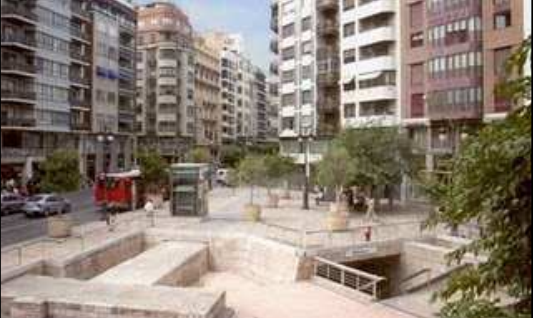
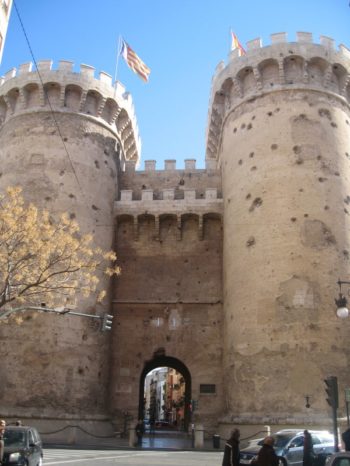
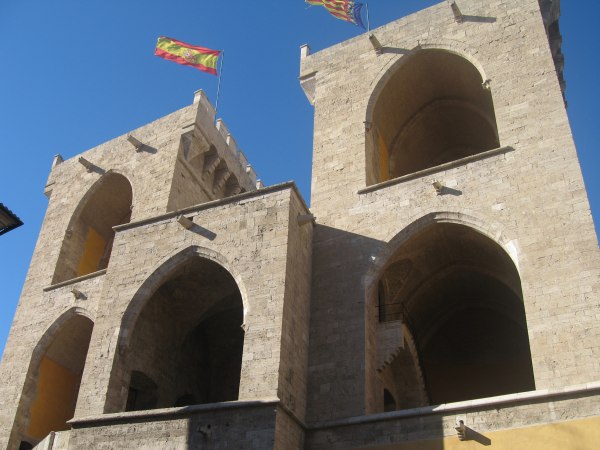


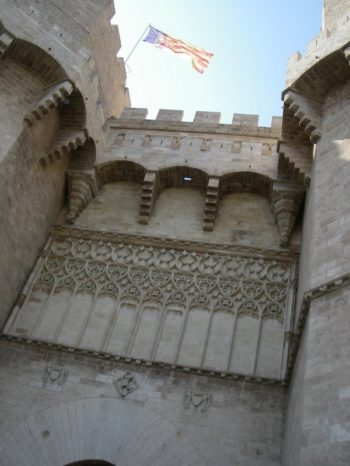
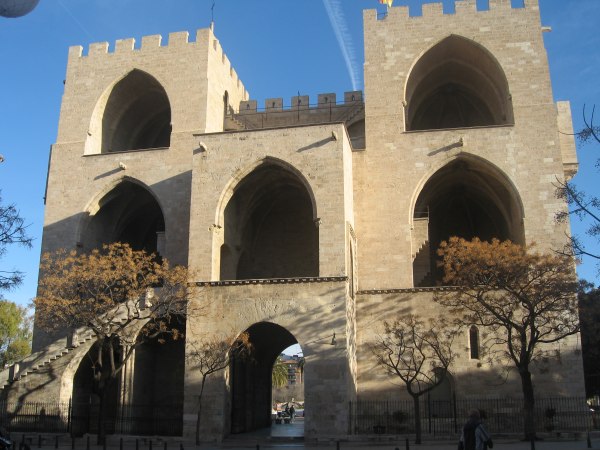
Dades bàsiques
Calle del Portal de Valldigna, 46003 Valencia